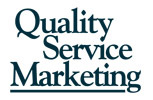Trust me, I never said that to my parents and teachers. But that’s what’s happened as my career evolved, and I’ve spent most of my 25 years with Quality Service Marketing developing and refining my skills as a facilitator.
What is facilitation?
“It’s a powerful way of working that gives everyone a chance to be an active part of the decision making process,” according to the International Association of Facilitators (IAF). It’s used in planning, problem-solving, creative thinking, input/feedback sessions, and other types of collaborative meetings. In my experience, facilitation involves establishing a base of mutual understanding … exploring possibilities and opportunities … communicating concerns … sharing and building ideas … setting clear direction and goals … and agreeing on next steps and responsibilities, including actions and follow up measures.
It’s about discovery
My role as facilitator is to guide the process of discovery that enables participants to determine where they want/need to go and what they need/want to do to get there. I start by learning as much about the group’s situation and culture as possible so I can develop the key questions and activities needed to effectively engage all participants in a comfortable, non-threatening environment. Then I get to serve in a dual, somewhat contradictory role: guiding the group in its discussions to keep on track and maintain focus, while also stepping back for those times when the group goes off in a different direction that’s critical to the discussion at hand.
The process is fascinating as I never quite know what the outcome will be, and I tell clients this upfront. For example, at one organization’s strategic planning retreat, board member discussion raised more issues than answers that needed to be explored further. With the group’s consensus, we suspended the strategic planning portion of the retreat, and the board then focused on identifying the critical topics that needed to be addressed before continuing strategic planning.
As a facilitator, I’ve also discovered many insights into group behavior, communication, and collaboration.
It’s about asking the right questions
Although they may not realize it, most of my clients intuitively know what they need to do in planning, problem-solving, idea-gathering or ideation. So my primary role as facilitator is to objectively ask the questions that enable them to discover and articulate the answers they need. The type of facilitation I prefer to use is Solutions-Focus, a positive approach to generating change that builds on what is possible rather than trying to fix what is problematic. (Special thanks to my colleague and solutions-focus mentor, Alan Kay, for introducing me to this approach many years ago.)
It’s International Facilitation Week
I’m proud to be an IAF member and celebrate International Facilitation Week the third week in October. I’ll share some of my favorite resources for facilitators in my next post.











